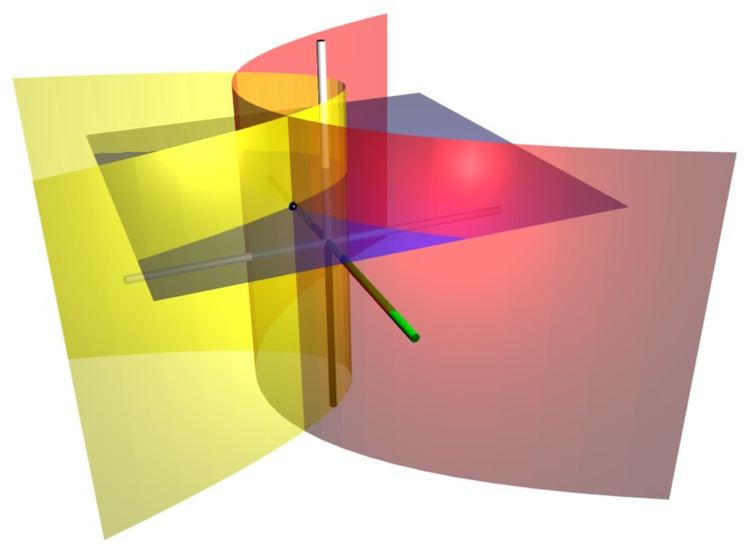 | ||
In mathematics, the parabolic cylinder functions are special functions defined as solutions to the differential equation
This equation is found when the technique of separation of variables is used on Laplace's equation when expressed in parabolic cylindrical coordinates.
The above equation may be brought into two distinct forms (A) and (B) by completing the square and rescaling z, called H. F. Weber's equations (Weber 1869):
and
If
is a solution, then so are
If
is a solution of equation (A), then
is a solution of (B), and, by symmetry,
are also solutions of (B).
Solutions
There are independent even and odd solutions of the form (A). These are given by (following the notation of Abramowitz and Stegun (1965)):
and
where
Other pairs of independent solutions may be formed from linear combinations of the above solutions (see Abramowitz and Stegun). One such pair is based upon their behavior at infinity:
where
The function U(a, z) approaches zero for large values of z and |arg(z)| < π/2, while V(a, z) diverges for large values of positive real z .
and
For half-integer values of a, these (that is, U and V) can be re-expressed in terms of Hermite polynomials; alternatively, they can also be expressed in terms of Bessel functions.
The functions U and V can also be related to the functions Dp(x) (a notation dating back to Whittaker (1902)) that are themselves sometimes called parabolic cylinder functions (see Abramowitz and Stegun (1965)):
Function D(a,z) was introduced by Whittaker and Watson as a solution of eq.~(1) with
